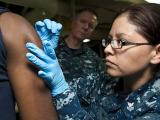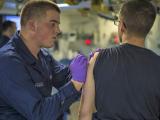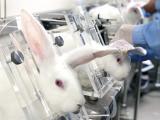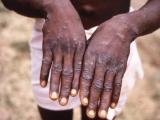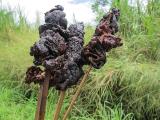Apr 27, 2012 (CIDRAP News) – A US laboratory worker contracted a painful, slow-healing cowpox virus infection on the job in 2010, marking the first such case reported in the United States, though the virus, a relative of smallpox, is known in Europe and Russia, according to a study published yesterday.
The infected researcher had not worked with cowpox virus, but samples of the virus were stored in a freezer in the lab, and evidence of cowpox virus was found in three samples from lab surfaces, says the early-online report in the Journal of Infectious Diseases. The lesion, on the worker's hand, took close to 3 months to heal, and the diagnosis took even longer.
The report was written by authors from the US Centers for Disease Control and Prevention (CDC), with Andrea M. McCollum as first author, along with some state and local health officials. The report does not identify the lab or the state or city where it is located.
Cowpox viruses are in the Orthopoxvirus genus, which includes smallpox (variola) and vaccinia, the virus used in smallpox vaccines. Cowpox infections are usually self-limiting, but they can be severe or fatal in people who have dermatitis, eczema, or immunocompromising conditions, the report says.
In Europe and Russia, cowpox infections are often associated with contact with sick domestic cats, rats, or zoo animals. Cases have been reported in veterinarians and animal handlers, but neither human no animal infections have been reported previously in the United States, according to the article.
The lab employee worked with a type of poxvirus that is not in the Orthopoxvirus genus (a "non-Orthopoxvirus Chordopoxvirus") and does not infect humans. He or she had not received a smallpox shot, though vaccination was offered to workers in the lab on hiring.
A painful, ulcerated lesion appeared on the worker's finger around Jul 10, and by Jul 13 he or she had swollen lymph nodes, fever, chills, body aches, and headaches, the report says. Most of those symptoms subsided after 5 days, but the local pain persisted and spread to other fingers.
The patient saw several physicians, including a dermatologist and a hand surgeon, over a period of several weeks. He or she reported that the lesion healed by about Oct 1, but residual pain and stiffness persisted weeks longer. The worker didn't think cowpox virus was being used in the lab and hence didn't tell the physicians it was stored there.
The infection was finally identified after one of the patient's physicians contacted the CDC on Oct 5 about testing the patient for a possible vaccinia infection, and the state health department was notified. Testing of serum samples showed that the patient had Orthopoxvirus antibodies, and subsequent polymerase chain reaction assays pointed to cowpox.
An official at the patient's lab said the cowpox virus stocks there had been stored in a freezer for 5 years, with no known use or movement. Some of the vials of cowpox viruses were stored in boxes with other poxvirus species. The patient had had no contact with animals other than pets before the infection, and none of the worker's contacts or pets had similar symptoms.
About the time the patient's infection began, some mice that the patient handled exhibited lesions, and it was eventually learned that they had been injected with a viral line contaminated with coxpox virus, the report says. Also, workers in the lab reported they didn't always wear gloves when handling live virus and cell cultures.
Because other poxvirus samples were contaminated with cowpox virus in the lab, the authors became concerned that the patient's infection might involve a novel recombinant virus. They ran additional tests to rule that out. Sequencing of the virus's hemagglutinin gene revealed the Brighton strain of cowpox, which is commonly used in labs.
In the environmental investigation, 3 of 20 samples, including one from the handle of the virus stock freezer, tested positive for Orthopoxvirus DNA.
Although it was not clear exactly how the worker was infected, the authors write, "Overall, the data suggest that the patient was likely infected by handling laboratory stock virus reagents or contact with environmental surfaces which were contaminated with cowpox virus."
They comment that their investigation points up "the drawbacks of clinical reliance on patient recall about potential exposures, occupational or otherwise." They add that unexplained, potentially lab-acquired infections in lab workers should be promptly reported to institutional and occupational health officials and to public health agencies.
McCollum AM, Austin C, Nawrocki J, et al. Investigation of the first laboratory-acquired human cowpox infection in the United States. J Infect Dis 2012 (early online publication Apr 26) [Abstract]

